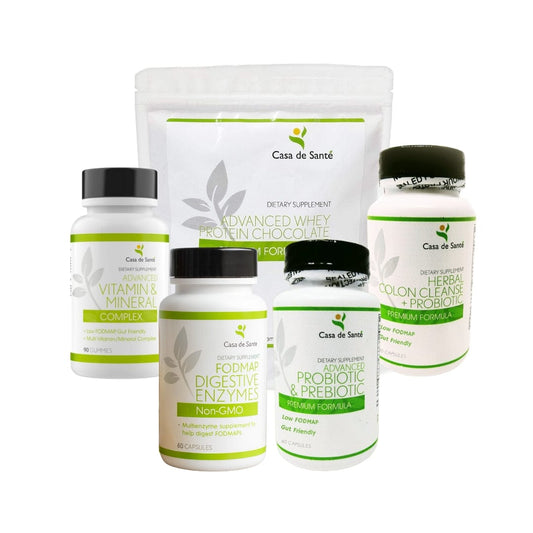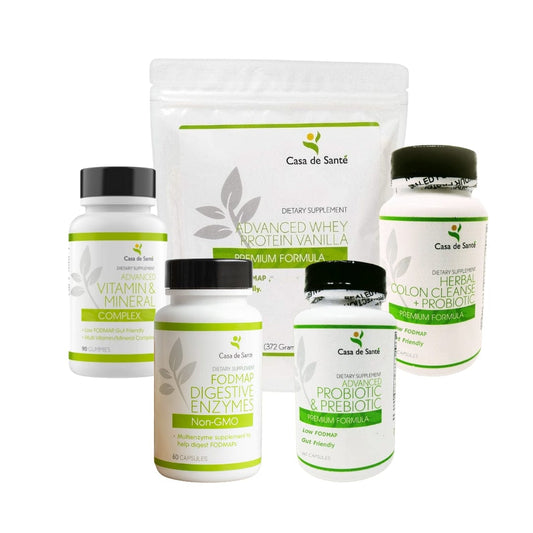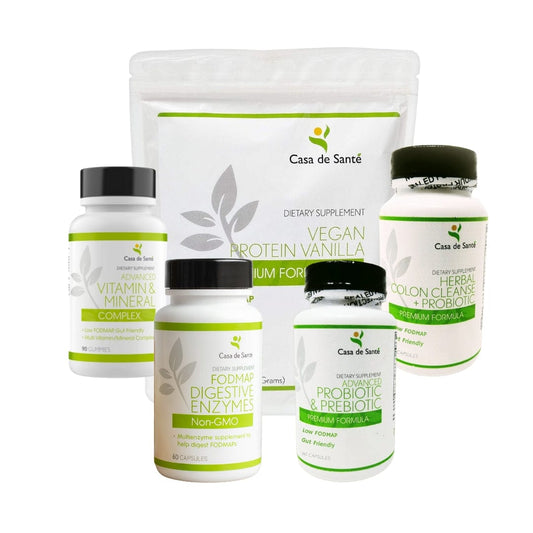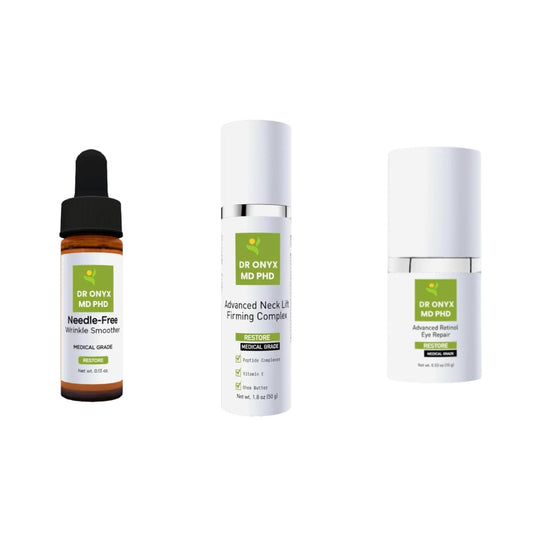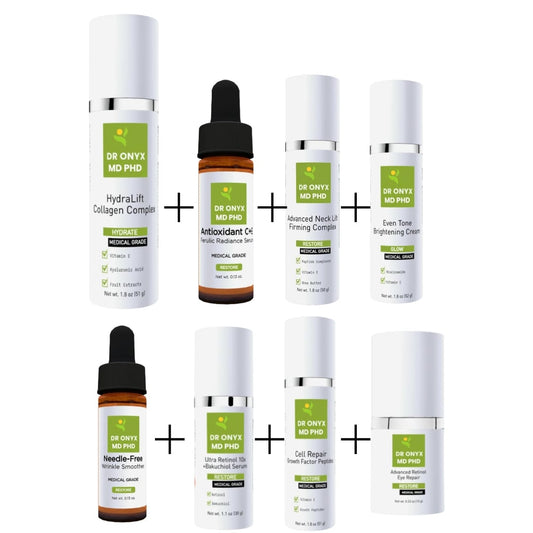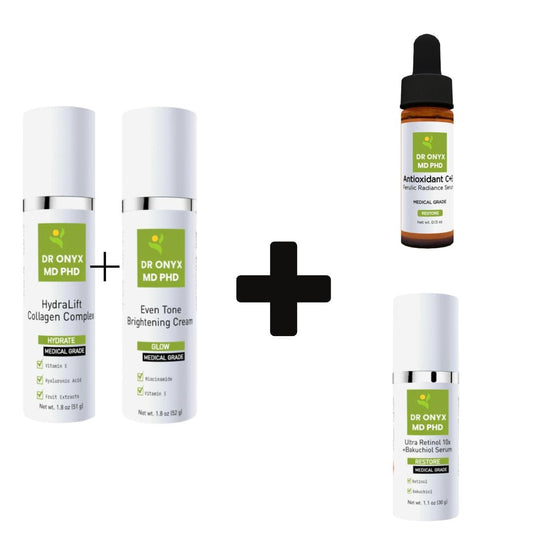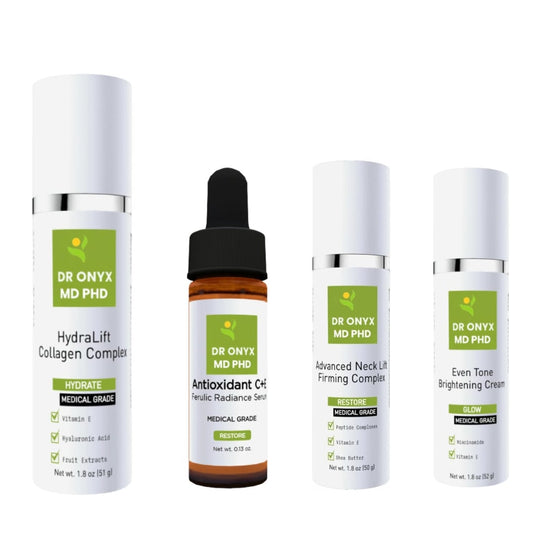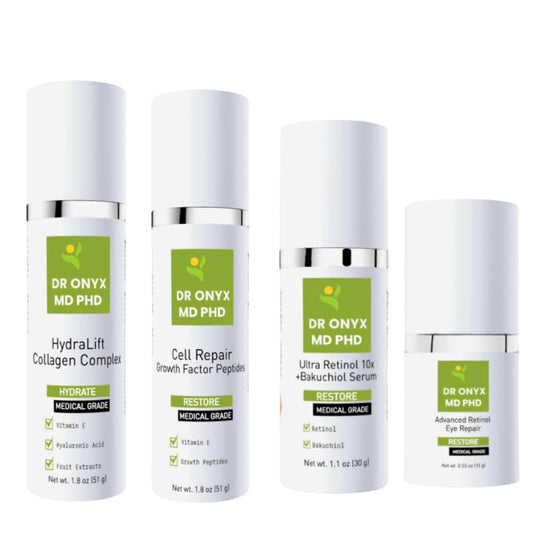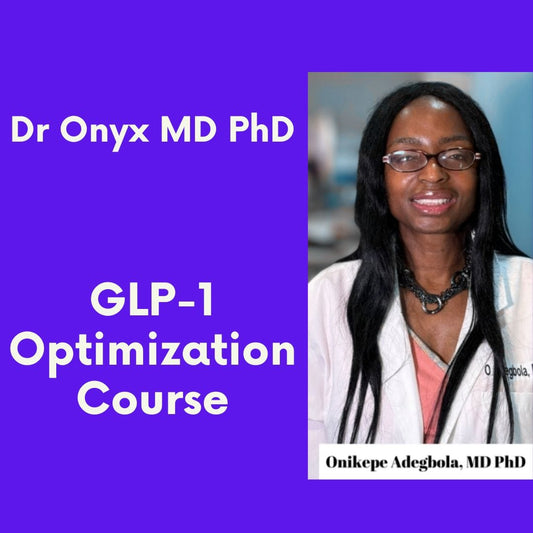10 Effective Ways to Naturally Boost Your GLP-1 Levels
GLP-1 (Glucagon-Like Peptide-1) has become a buzzword in health and wellness circles, and for good reason. This powerful hormone plays a crucial role in regulating blood sugar, appetite, and even cardiovascular health. While medications like Ozempic and Wegovy work by mimicking or enhancing GLP-1 activity, there are natural ways to boost your body's own production of this beneficial hormone. In this article, we'll explore ten effective strategies to naturally increase your GLP-1 levels without prescription medications.
Understanding GLP-1 and Its Benefits
Before diving into how to boost GLP-1 naturally, it's important to understand what this hormone does. GLP-1 is produced in your intestines when you eat, particularly in response to nutrients. It slows gastric emptying (making you feel fuller longer), stimulates insulin release (helping manage blood sugar), and signals to your brain that you're satisfied.
The benefits of optimal GLP-1 levels extend beyond weight management. Research shows that healthy GLP-1 function is associated with improved heart health, better cognitive function, and may even play a protective role against certain neurodegenerative conditions. With these impressive benefits, it's no wonder many people are interested in naturally optimizing their GLP-1 levels.
GLP-1, or Glucagon-Like Peptide-1, belongs to a class of hormones called incretins that are crucial for metabolic regulation. When specialized L-cells in your intestinal lining detect nutrients—especially carbohydrates and fats—they secrete GLP-1 into your bloodstream within minutes of eating. This hormone then initiates a cascade of physiological responses that help regulate not just appetite but also energy homeostasis throughout the body.
Interestingly, researchers have discovered that GLP-1 receptors are distributed far beyond just the pancreas and digestive system. These receptors have been identified in the lungs, kidneys, blood vessels, and various regions of the brain, explaining the hormone's wide-ranging effects. In the cardiovascular system, GLP-1 helps reduce inflammation, improves endothelial function, and may even help regulate blood pressure. In the brain, it appears to influence reward pathways related to food intake while also supporting neuronal health and potentially offering protection against oxidative stress that contributes to cognitive decline.
Dietary Changes to Boost GLP-1
Increase Fiber Consumption
Fiber is perhaps the most powerful natural GLP-1 stimulator. When fiber ferments in your gut, it produces short-chain fatty acids that directly stimulate L-cells in your intestine to release GLP-1. Aim for at least 25-30 grams of fiber daily from diverse sources.
Particularly effective are soluble fibers found in foods like oats, barley, legumes, flaxseeds, and fruits such as apples and berries. A study published in the Journal of Nutrition found that participants who consumed a high-fiber meal experienced significantly higher GLP-1 responses compared to those eating low-fiber alternatives.
The timing of fiber consumption may also enhance its GLP-1-boosting effects. Research from the University of California suggests that consuming fiber-rich foods earlier in the day can optimize GLP-1 secretion patterns. Additionally, combining different fiber types—such as the beta-glucans in oats with the pectin in apples—creates synergistic effects that may amplify GLP-1 production beyond what either fiber could achieve alone. Many nutritionists recommend gradually increasing fiber intake to avoid digestive discomfort and to give your gut microbiome time to adapt to the increased fermentable substrate.
Consume Probiotic-Rich Foods
The health of your gut microbiome directly influences GLP-1 production. Probiotic-rich foods help cultivate beneficial bacteria that enhance GLP-1 secretion. Include fermented foods like yogurt, kefir, sauerkraut, kimchi, and kombucha in your diet regularly.
Research from the University of Copenhagen demonstrated that certain probiotic strains, particularly those in the Lactobacillus and Bifidobacterium families, can significantly increase GLP-1 levels. A diverse microbiome creates an optimal environment for the intestinal cells that produce this important hormone.
The fermentation process itself creates bioactive peptides and organic acids that may independently stimulate GLP-1 production. For instance, traditional fermented dairy products like Greek yogurt contain unique peptide profiles not found in non-fermented alternatives. A 2022 study in the Journal of Functional Foods found that participants consuming 150g of traditionally fermented yogurt daily for three weeks showed a 24% increase in postprandial GLP-1 levels compared to the control group. The benefits appear to be cumulative, with more consistent microbiome improvements observed after 4-6 weeks of regular probiotic food consumption.
Prioritize Protein
Protein consumption is a powerful trigger for GLP-1 release. High-quality proteins from both plant and animal sources can stimulate GLP-1 secretion more effectively than carbohydrates or fats alone. Good sources include lean meats, fish, eggs, dairy, legumes, and plant-based proteins like tempeh and tofu.
For maximum benefit, include some protein with each meal. A study in the American Journal of Clinical Nutrition found that a high-protein breakfast increased GLP-1 levels and reduced hunger throughout the day compared to a high-carbohydrate breakfast with the same calorie content.
The specific amino acid composition of proteins appears to influence their GLP-1-stimulating potential. Proteins rich in branched-chain amino acids (BCAAs) like leucine, isoleucine, and valine have demonstrated particularly strong effects on GLP-1 secretion. Whey protein, which is rapidly digested and has a high BCAA content, shows especially promising results in clinical studies. Interestingly, combining protein with fiber creates a powerful one-two punch for GLP-1 production—for example, adding chia seeds to a protein smoothie or consuming beans with fish. The protein-fiber combination not only enhances GLP-1 release but also slows gastric emptying, prolonging the stimulation of intestinal L-cells responsible for GLP-1 secretion.
Lifestyle Modifications for Enhanced GLP-1 Production
Regular Exercise
Physical activity has been shown to increase GLP-1 levels independent of dietary changes. Both aerobic exercise and resistance training appear to stimulate GLP-1 production, though the effects may be more pronounced with higher-intensity workouts.
A 2018 study published in Endocrine Connections found that just 30 minutes of moderate-intensity exercise increased GLP-1 levels in participants with type 2 diabetes. The effect appears to be cumulative, with regular exercisers maintaining higher baseline levels of this beneficial hormone.
Aim for at least 150 minutes of moderate exercise weekly, combining cardiovascular activity with strength training for optimal hormonal benefits. Even short bursts of activity, like a brisk 10-minute walk after meals, can help stimulate GLP-1 release.
Intermittent Fasting
Intermittent fasting regimens may help reset and optimize GLP-1 sensitivity and production. Time-restricted eating, where you consume all your daily calories within an 8-10 hour window, has shown promising results for improving metabolic health, including GLP-1 function.
Research from the University of Illinois found that even without calorie restriction, simply limiting eating to a shorter daily window improved insulin sensitivity and incretin hormone response (including GLP-1). Start with a 12-hour fasting window overnight and gradually extend it if it feels comfortable for your body.
Specific Foods and Compounds That Boost GLP-1
Olive Oil and Healthy Fats
Extra virgin olive oil contains compounds that may stimulate GLP-1 secretion. The monounsaturated fats and polyphenols in olive oil appear to have beneficial effects on incretin hormones, including GLP-1. Other healthy fats like those found in avocados, nuts, and fatty fish can also support optimal hormone production.
A Mediterranean diet, rich in olive oil and other healthy fats, has been associated with improved GLP-1 response in multiple studies. Try replacing processed oils with extra virgin olive oil in your cooking and salad dressings for a simple GLP-1 boost.
Green Tea and Coffee
Both green tea and coffee contain compounds that may enhance GLP-1 production. The catechins in green tea and chlorogenic acids in coffee have been shown to stimulate GLP-1 release in some studies. These beverages also contain antioxidants that support overall metabolic health.
A Japanese study found that regular green tea consumption was associated with higher GLP-1 levels and better glucose tolerance. Similarly, moderate coffee consumption (2-3 cups daily) has been linked to improved incretin response. Just be mindful of adding sugar or artificial sweeteners, which may counteract some of these benefits.
Spices and Herbs
Certain spices and herbs can significantly impact GLP-1 production. Turmeric (specifically its active compound curcumin), cinnamon, ginger, and fenugreek have all demonstrated potential to enhance GLP-1 secretion in research studies.
A 2019 study in the International Journal of Molecular Sciences found that cinnamon extract increased GLP-1 levels and improved glucose metabolism. Incorporating these spices into your daily cooking not only adds flavor but may provide meaningful hormonal benefits as well.
Avoiding Factors That Decrease GLP-1
Limit Artificial Sweeteners
While artificial sweeteners are often marketed as "diet-friendly," some research suggests they may disrupt the gut microbiome and potentially interfere with normal GLP-1 signaling. A study published in Nature found that non-caloric artificial sweeteners altered gut bacteria in ways that could negatively impact glucose metabolism.
If you're trying to optimize GLP-1 function, consider reducing or eliminating artificial sweeteners from your diet. Instead, use small amounts of natural sweeteners like honey or maple syrup, or better yet, retrain your palate to enjoy less sweetness overall.
Reduce Ultra-Processed Foods
Highly processed foods often contain ingredients that can disrupt gut health and hormonal signaling. These foods typically lack the fiber and nutrients that stimulate GLP-1 production while containing additives that may interfere with optimal gut function.
A diet high in whole, minimally processed foods naturally supports better GLP-1 production. Focus on foods that don't require a lengthy ingredient list and prepare more meals at home where you control the ingredients.
Putting It All Together: A GLP-1 Boosting Plan
Rather than trying to implement all these changes at once, consider a gradual approach to naturally enhancing your GLP-1 levels. Start by increasing fiber intake and adding more probiotic foods to your diet. Then incorporate regular physical activity and experiment with time-restricted eating if appropriate for your health situation.
Remember that consistency matters more than perfection. Small, sustainable changes to your diet and lifestyle will likely yield better long-term results than drastic overhauls that prove difficult to maintain. Monitor how your body responds to these changes, particularly noting improvements in hunger cues, energy levels, and blood sugar stability.
While natural methods may not produce the dramatic effects seen with GLP-1 medications, they come without the potential side effects and can be maintained indefinitely as part of a healthy lifestyle. Plus, these approaches offer numerous additional health benefits beyond just GLP-1 enhancement.
Conclusion
Boosting your GLP-1 levels naturally is achievable through thoughtful dietary choices and lifestyle modifications. By increasing fiber consumption, adding probiotic foods, prioritizing protein, exercising regularly, and incorporating specific GLP-1-boosting foods like olive oil and green tea, you can optimize your body's natural hormone production.
These strategies not only support healthy GLP-1 levels but also contribute to overall metabolic health, gut function, and wellbeing. While pharmaceutical GLP-1 agonists have their place in medical treatment, these natural approaches offer a sustainable, side-effect-free alternative or complement to help manage appetite, blood sugar, and weight over the long term.
As with any health strategy, consider consulting with a healthcare provider before making significant changes, especially if you have existing medical conditions or take medications. With patience and consistency, these natural methods can help you harness the power of GLP-1 for improved metabolic health.

